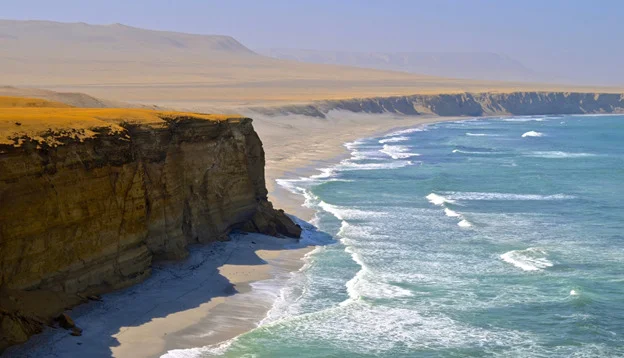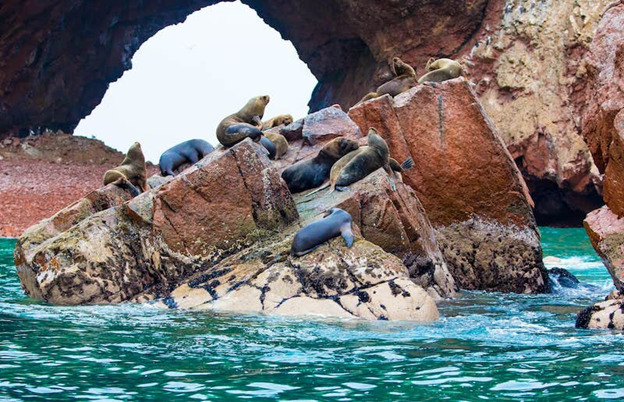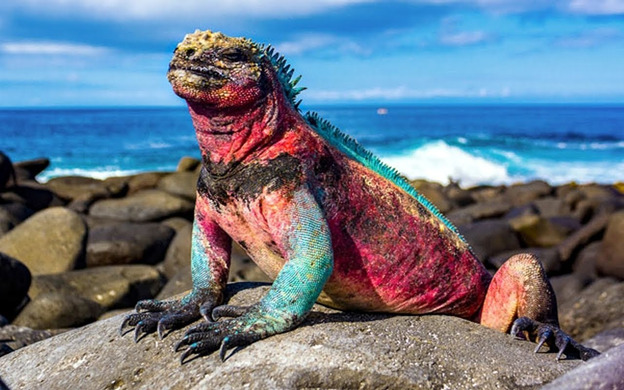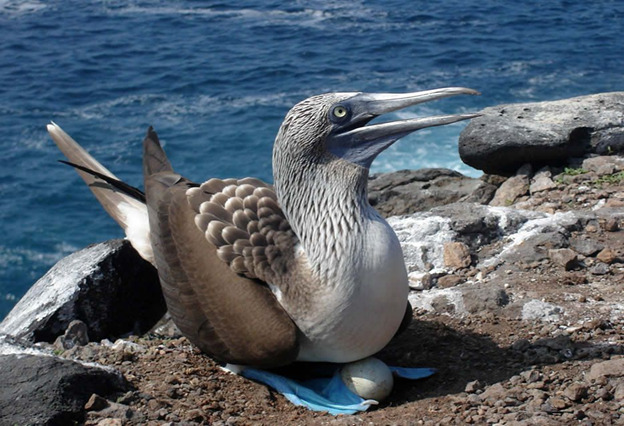
Discover the Hidden Fauna of Coastal Beaches Peru and Ecuador | Travel Blog
Coastal beaches aren't all sunshine and sun, they are actually living ecosystems packed with life. The waves and dunes hold unexpected views and wonders, and nature reveals them to observant eyes.
A few species have learned to live in harmony in the ever-changing coastal ecosystem. Some appear only at certain tides or seasons. To observe them brings a rare feeling of belonging to nature's lesser-well-known side.
This blog tours you through the unique fauna that characterizes coastal shores. Discover creatures often overlooked by adventurous tourists. Learn how to observe them and protect their fragile habitats.
Table of content
Between the rocks: Tidepools treasures

Low tide reveals a dazzling universe at tidepools. Waves and winds sculpt them on Ecuador and Peru's rocky shores. Tidepools are shallow pools that display a variety of ocean dwellers. You won't have to disrupt their natural flow because you can observe them.
There will be rainbow-colored anemones and starfish glued to rocks in ocean crevices. Crabs dig holes in soft places among the rocks.
The animals of shore beaches exist in this constantly changing world. Waves recreate their world every day, and it is difficult but rewarding for survival. Tidepools are temporary shelter, and animals must adapt with haste.
Octopuses withdraw to small crevices to hide from predators, and sea urchins cement themselves on rocks. Sea grass and algae serve as camouflage from above for some. Others make it through by freezing into immobility.
Marine Diversity of Tidepools in Peru and Ecuador

Ecuador 's Islas Galápagos provides an amazing array of intertidal fauna. Along Peru's coastlines at Paracas and Punta Sal, there is also vivid tidal hábitat.
The sea creatures of coastal beaches in such regions include snails,shrimp and other mollusks that degrade organic material. Be sure to notice limpets, which cling to rocks and eat algae during low tide. All of the species make sure the ecosystem is in check. Some use the environment to camouflage themselves from predators. Bright colors are typically warnings to avoid. Others use hardened shells and quick reflexes.
Unabated climate change brings threats to many of these sensitive ecosystems currently. Pollution finds its way to the sandy shores and the tide pools along them.Regulated tourism may be employed in securing such natural places.
By being careful and keeping a safe distance, we can help maintain protection for coastal wildlife. Do not touch the animals or pick anything from the tide pools. Make every encounter an act of respect and gratitude.
You can also collect signs of bigger animals that are nearby. Sea turtle tracks and feeding marks indicate the remaining wildlife outside of the tidepools. Even the elusive piping plover occasionally visits these pools for food.
Entering tidepools only introduces us to the exceptional wildlife of coast beaches. Such living mosaics reveal how nature is able to survive. Tidepools remind us to take a step back and look at life between tides.
Wildlife: Spotting camouflaged creatures in the Sand and Surf

The wildlife along the coastal beaches of Peru and Ecuador has a tendency of camouflaging and hiding in plain view. Camouflage here is their method of avoiding predators as well as searching for food. Spottings them requires patience, a keen eye, and a little luck.
Ghost crabs, nearly invisible on light-colored sand, flash quickly across sand dunes. Their light-colored backs shine like mirrors, reflecting the sun and making them hard to spot. The speedy travelers halt only when they feel themselves safely hidden.
Flatfish bury themselves beneath shallow water along shorelines. Their mottled skin helps them blend with the seafloor, and they are well camouflaged. Alert eyes might catch a flash of movement beneath the surf.
Many reptiles and insects also camouflage themselves into their surroundings with incredible precision. Some lizards copy the coloration of adjacent sand or rocks. They just freeze, only coming to life when disturbed.
The Art of Disguise in Coastal Habitats
Seashore beach wildlife utilizes camouflage both as a form of protection, and as a tactic for hunting. Predators like herons stalk prey by sneaking, and utilizing shade and silence. Camouflaged fish ambush tiny prey with sharp, deliberate movements.
On isolated beaches in Ecuador, tiny creatures burrow underground during the day to escape the heat and predators. During the night, they emerge quietly to eat and move around. They depend only on staying hidden to live.
The list of species of camouflaged animals goes beyond crabs and fish. Some spiders and beetles turn invisible against sandy landscapes. Shell-carrying mollusks stick to rocks, looking like part of the environment.
Some of the beach birds disguise themselves among leaves and pebbles, especially during the nesting season. The birds disguise the eggs in full view to protect them from animals and curious humans.
Tourists themselves tread across these animals without ever even noticing they exist. That's the wonder of coastal beach wildlife it exists unnoticed. To see it, you have to move at a slow pace and look carefully.
The coastlines of Peru and Ecuador offer ideal terrain for this kind of discovery. Areas near sand dunes or rocky stretches reveal more activity than open sand. Mornings and low tide increase your chances of spotting life.
Witnessing these camouflaged sea animals in action is a true gift. It helps your connection with nature. And it reminds us that beauty often hides in silence and stillness.

Birdlife by the Shore: Coastal Birds and Their Behaviors
Peru and Ecuador's shores are full of life, especially birds. These seaside birds, as they have come to be known, have learned to survive in a world where weather patterns constantly change due to winds, waves, and shifting sands. To survive, it is patience coupled with quick reaction.
Shorebirds like plovers and sandpipers scurry along the shoreline, snatching tiny animals between the waves. Their rapid, zigzagging gait allows them to escape predators and find food. They move in bands, tracking the tide to search for new feeding grounds.
Pelicans skin effortlessly over the ocean before dropping down to prey on fish. They hunt as a group, showing great co-ordination and teamwork. At a distance away, cormorants lay resting with flapping wings drying out before resuming another dip.
Seagulls, although often understated, are very smart around food. A few drop shells from great heights to crack open. Others subtly steal food away from other nearby birds, using cunning methods to outmaneuver their opponents.
Breeding, Feeding, and Coastal Adaptations
Many seabirds migrate to the same beaches to feed and breed and to rear their young. They time their breeding to coincide with the seasonal peak in marine food. These places need to be quiet and secure to keep bird numbers up.
In Ecuador, migrating frigatebirds and blue-footed boobies gather on shores. Then they put on grand courtship rituals — a spectacle that attracts not only mates but also curious observers. These spectacles help create healthy genetic diversity.
Peruvian coast is where terns dive with acutely sharp precision. They fold their bodies mid-air before swooping down to snatch fish just below the surface. Whether or not they are successful at hunting depends highly on clear weather and flat seas.
But life on such beaches is becoming harder. More tourism, pollution, and habitat destruction are putting pressure on the birds and their delicate habitats. Noise- or movement-sensitive birds may abandon large nesting sites.Conservation of such places helps rare coastal birds survive. Beach cleanup, educating visitors, and native conservation all help reduce people's damage.
Observation of these birds reveals beyond their beauty. Their feeding pattern, flight trajectories, and social interaction tell stories of adaptability and instinct. All these activities connect to wider life systems of the shore.

Nocturnal Visitors: Wildlife in the nighttime
Nightfall brings hidden creatures out from sand, sea, and sky. Fauna of shore beaches becomes active and mysterious at night.
Crabs make use of the night to avoid larger predators. Besides, they hunt for food under the quietness of moonlight. They are fast, strategized, and impossible to track.
Fox-like animals and small foxes patrol the shores for stranded fish and shellfish. Their footprints are erased by rising tide. These shore bottom foragers are a vital component of the food web.
Sea Turtles and Coastal Nightlife
One of the most bewitching events to take place on these shores is the nighttime appearance of the sea turtles. Female turtles will climb slowly up on the beach to lay eggs under starlight. Their ancient ritual is both silent and powerful.
Hatchlings emerge weeks afterward, under moonlight as they race to the waves. Natural predators lie in wait close by for an easy meal. Conservation teams sometimes patrol nests to increase the hatchlings' survival rate.
Night also changes the behavior of birds who remain near the coast. Some species quietly call during the darkness, keeping pace with their flock. Others stay still, relying on camouflage to shield them.
On Ecuador's beaches, glowing plankton light up the surf when disturbed. Nature's bioluminescence creates a dream-like atmosphere with every step. The effect is a sign of a healthy marine environment sustaining the greater coastal fauna.
Past the glare and din of lights and crowds, coastal nights take on a vitality. Patience and silence are rewarded with memorable observations. Red flashlights are perfect to view animals without scaring them off.
Coastal animals have another rhythm: they stay up when people are sleeping. To see them at night is like seeing nature's secret show.
Whether you're watching sea animals, bioluminescent surf, or silent predators, an evening on the beach leaves a memorable mark. It reminds you that every hour contains something new to discover. The beach never truly sleeps, it just changes its voice.


